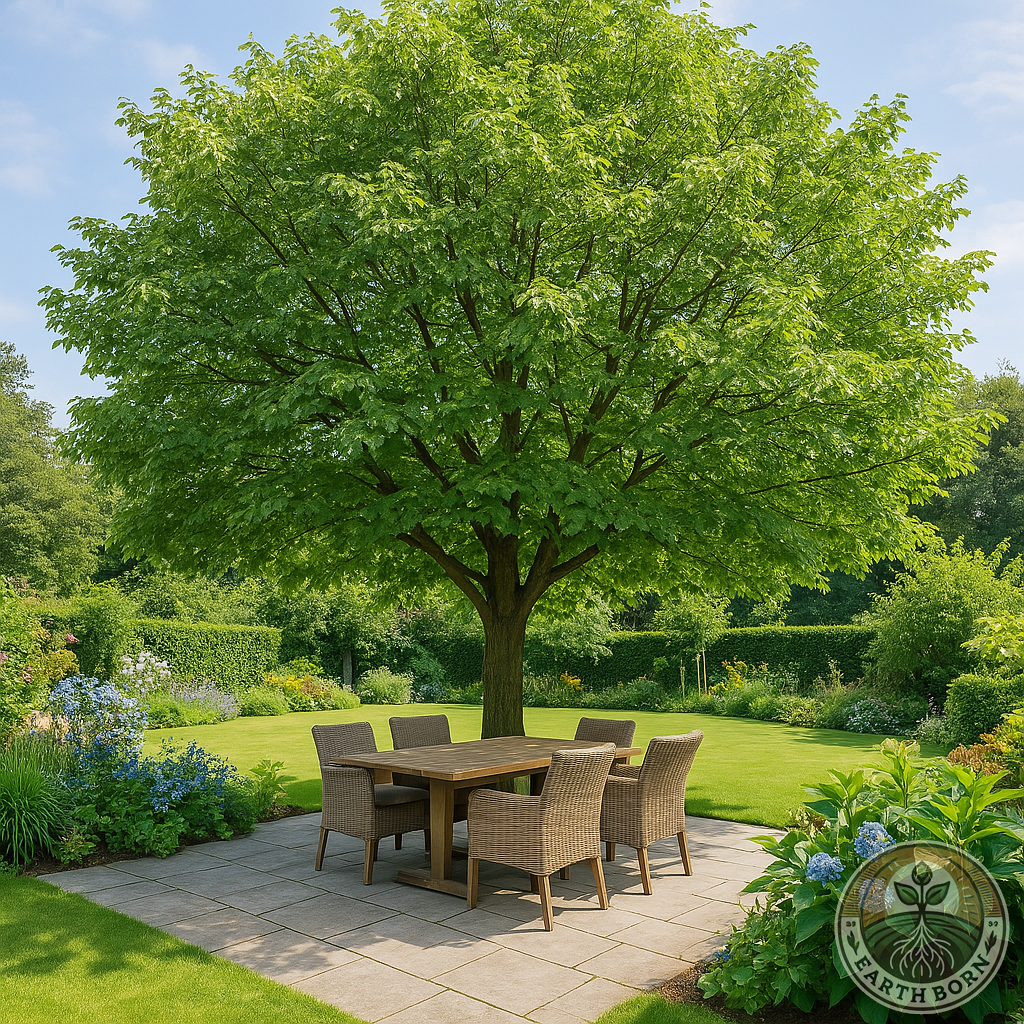
🌱 Slippery Elm (Ulmus rubra) is a medium-sized deciduous tree native to eastern North America, admired for its medicinal inner bark and deep cultural history. Though not indigenous to South Africa, it can still be grown successfully in local gardens under the right conditions. With its elegant form—often reaching heights of 12–18 meters—Slippery Elm can be an impressive and beneficial addition to your landscape.
💊 Medicinal Benefits
-
Soothing Properties: The bark contains mucilage and tannins that help relieve sore throats, coughs, and digestive discomfort.
-
Usage: Often brewed as a tea or ground into powder for poultices.
-
Caution: Allergic reactions are rare but possible. It’s always best to consult a healthcare professional before using any medicinal plant.
📅 When to Plant in South Africa
-
Timing: Plant in early spring (around September to November in South Africa) for best results.
-
Germination: Seeds typically sprout within 14–21 days under warm conditions.
-
Transplanting: Transfer seedlings into their permanent positions after about a year of growth.
🏠 Where to Plant Slippery Elm
-
Ideal Location: Plant in a spot with ample space for its mature height and spread. Slippery Elm appreciates open conditions to encourage strong, upright growth.
-
Soil: Prefers well-draining, acidic to neutral soil. Slightly loamy soil is particularly beneficial.
☀️ Soil, Water & Sunlight Requirements
-
Soil: Keep it consistently moist but never waterlogged; good drainage is key.
-
Water: Water regularly, especially during hot South African summers. Aim for moderate, even moisture.
-
Sunlight: Thrives in full sun to partial shade. At least six hours of direct sunlight per day is ideal.
✂️ Pruning & Growth Tips
-
Spacing: Position Slippery Elm trees 3–5 meters (about 10–15 feet) apart to allow proper airflow and root development.
-
Fertilizing: Feed with a balanced fertilizer or well-rotted compost each spring for vigorous growth.
-
Pruning: Prune in late winter or early spring to remove dead or diseased branches and to shape the tree. This also helps reduce pests and disease.
🦋 Companion Plants & Common Pests
-
Good Companions: Berry shrubs such as Blackberries, Blueberries, and Raspberries can coexist well, as they share similar soil and sunlight requirements.
-
Common Pests: Watch out for elm leaf beetles and Japanese beetles. Regular monitoring and prompt removal of affected leaves can help control infestations.
🎉 Fun Fact
The inner bark of Slippery Elm was once a key ingredient in a famous Native American remedy called “Indian Toothpaste.” Historically, it was also used as a natural survival food due to its nutritious properties when other supplies were scarce!
⚠️ Potential Downsides of Growing Slippery Elm in South Africa
-
Availability of Seeds or Saplings
-
Slippery Elm is not commonly grown in South Africa, so finding reputable suppliers for seeds or young trees can be challenging. Importing plant material may also require specific permits and adherence to local biosecurity regulations.
-
-
Climate Adaptation
-
While many regions in South Africa share similar temperate conditions with parts of North America, some areas can be too hot, dry, or humid for Slippery Elm to thrive. It performs best in regions with moderate summers and cool, even winters.
-
-
Disease Concerns
-
Dutch Elm Disease: Like other elm species, Slippery Elm is susceptible to Dutch Elm Disease (a fungal infection spread by bark beetles). Although the disease might be less common in South Africa than in its native range, an outbreak could still pose a significant threat.
-
Local Pests: Any exotic tree may introduce or become host to non-native pests, potentially affecting other local plants if outbreaks occur.
-
-
Invasive Potential
-
Slippery Elm is not widely listed as invasive in South Africa. However, with any non-native species, there is always a chance it may spread or impact local ecosystems in unexpected ways. Monitoring seed dispersal and growth patterns helps minimize any unintended ecological effects.
-
-
Lack of Local Expertise
-
Since Slippery Elm is not a mainstream ornamental or commercial tree in South Africa, local horticultural guidance can be limited. Gardeners may need to rely on research from international sources for best practices.
-
☀️ Recap of Key Growing Tips (If You Still Decide to Plant)
-
Medicinal Benefits: The inner bark contains soothing mucilage and tannins helpful for coughs, sore throats, and digestive support.
-
When to Plant in SA: Early spring (September–November) is best; seeds germinate within 14–21 days.
-
Where to Plant: In full sun to partial shade, in well-draining, slightly acidic to neutral soil.
-
Soil, Water & Sunlight: Keep the soil moist but not waterlogged; ensure at least six hours of sunlight daily.
-
Spacing & Growth: Plant trees 3–5 meters apart; prune in late winter or early spring to maintain shape and health.
-
Companion Plants & Pests: Berries such as Blueberries or Blackberries can pair well; watch out for elm leaf beetles or Japanese beetles.
-
Fun Fact: Slippery Elm bark was historically used in a popular Native American remedy called “Indian Toothpaste,” valued for its soothing properties.
Whether or not you choose to grow Slippery Elm, being aware of these potential challenges will help you make an informed decision and practice responsible gardening.
📣 Summary & Call to Action
From its soothing medicinal bark to its stately presence in the garden, Slippery Elm offers a blend of practicality and history. By planting in spring, providing the right soil conditions, and dedicating some care to pruning and pest prevention, South African gardeners can enjoy the unique benefits of this remarkable tree. Will you give Slippery Elm a chance in your garden?
#EarthBornGrower #SlipperyElm #GardeningTips #SouthAfricanGarden


 **Meet Sprout!** Sprout is your friendly gardening companion at Earthborn, always ready with helpful advice on plant care, medicinal herbs, and natural gardening solutions. From seedling to harvest, Sprout provides expert guidance to nurture your garden and your well-being—making gardening easy, fun, and naturally rewarding.
**Meet Sprout!** Sprout is your friendly gardening companion at Earthborn, always ready with helpful advice on plant care, medicinal herbs, and natural gardening solutions. From seedling to harvest, Sprout provides expert guidance to nurture your garden and your well-being—making gardening easy, fun, and naturally rewarding.
